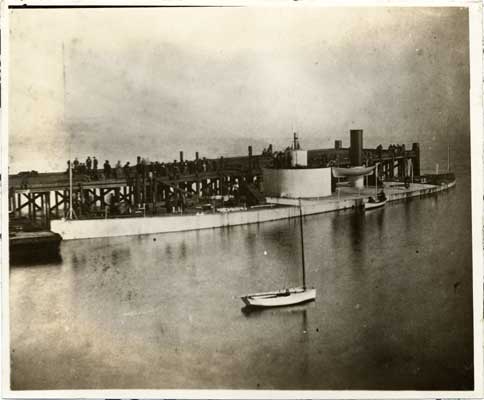One of our archivists here at the San Francisco History Center has just finished cataloging a diary of Edward L. G. Steele, a Civil War-era commission merchant's clerk who later became President of both the Oceanic Steamship Company and American Sugar Refinery. We invite you to come up to the 6th floor to read it, perhaps as part of your Summer Reading Program. The diary, which opens Nov. 1, 1863, when Steele is 21, gives the reader a candid view of the social, personal, and workaday life of a young man before he becomes a tycoon.
Steele first landed in San Francisco November 4, 1861, after a voyage from New York in the ship Contest (this voyage is documented in an earlier diary, a transcription of which is also available here in the San Francisco History Center while the original is out for repair). Two years later, when the diary pictured here opens, Steele is in the thick of his leisure and office life. Here's the first page:
 |
| Entry from Edward L.G. Steele Diary, SF MSS 22/2 |
As the diary progresses, Steele muses about romantic relationships, various girlfriends (Miss Sue Hazeltine, and Miss Icy Turner, to name two), and several rejected marriage proposals. He plays violin, billiards, and vingt-un, goes drinking, and attends public dances, parties, and "Bunker Hill Balls." He drills with the City Guard, Co. B, a state militia unit, and occasionally comments on their meetings, parades, and other activities. He socializes with his landlords, Charles R. Story and wife Caroline Bayley Story, and her brother George Bayley.
On April 1, 1864, Steele moves from the Story's home to Anna Key Turner's boarding house at 933 Sacramento Street, which one source calls the most fashionable boarding-house in San Francisco. Here it is highlighted in a detail from "Vue de San-Francisco"/Vista de San-Francisco," circa 1860, by lithographer Isador Laurent Deroy:
 |
| View taken from the site of the Fairmont Hotel, facing east down Sacramento Street |
 | |
| The ironclad monitor Comanche, 1864. AAD-8466. San Francisco Historical Photograph Collection. |
Steele also notes some significant events, including the sinking of the ship Aquila and the monitor Comanche on November 14, 1863 and subsequent attempts to raise the Aquila; the death of Thomas Starr King on March 4, 1864; and the 1865 San Francisco earthquake.
 |
| E.L.G. Steele, San Francisco Chronicle, July 21, 1894 p. 5 |
The staff of the San Francisco History Center would also like to thank our volunteer Terry Horrigan, who patiently transcribed both Steele diaries, as well as other small manuscripts in our collection. Thank you, Terry!
Images of diary, lithograph, and photograph are courtesy of the San Francisco History Center, San Francisco Public Library.
nice work
ReplyDeletenice post
ReplyDeletegood
ReplyDeleteFor the Diner, you can quickly find restaurants serving the dishes you
ReplyDeletewant, then look through what’s available and make your email booking.
nice
ReplyDelete